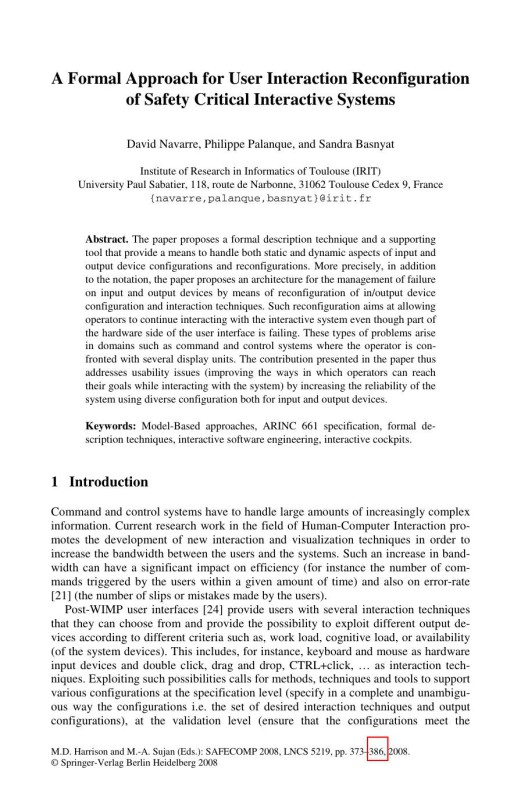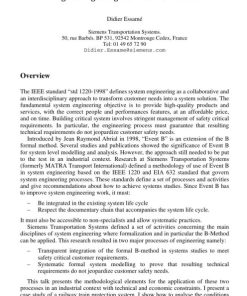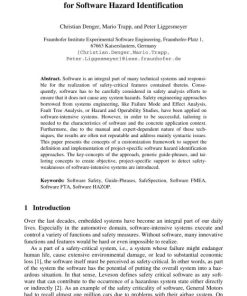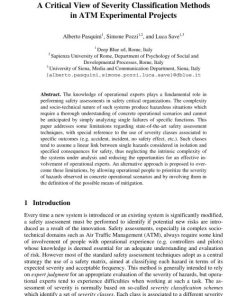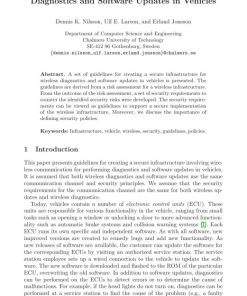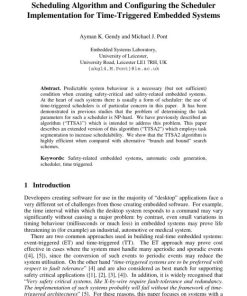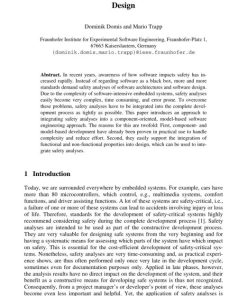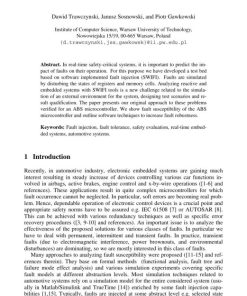A Formal Approach for User Interaction Reconfiguration of Safety Critical Interactive Systems 1st edition by David Navarre, Philippe Palanque, Sandra Basnyat ISBN 3540876977 9783540876977
$50.00 Original price was: $50.00.$25.00Current price is: $25.00.
Authors:David Navarre, Philippe Palanque; Sandra Basnyat , Tags:Computer Safety; Reliability; and Security , Author sort:David Navarre, Philippe Palanque & Basnyat, Sandra , Languages:Languages:eng , Comments:Comments:Computer Safety, Reliability, and Security
A Formal Approach for User Interaction Reconfiguration of Safety Critical Interactive Systems 1st edition by David Navarre, Philippe Palanque, Sandra Basnyat – Ebook PDF Instant Download/Delivery. 3540876977, 978-3540876977
Full download A Formal Approach for User Interaction Reconfiguration of Safety Critical Interactive Systems 1st Edition after payment
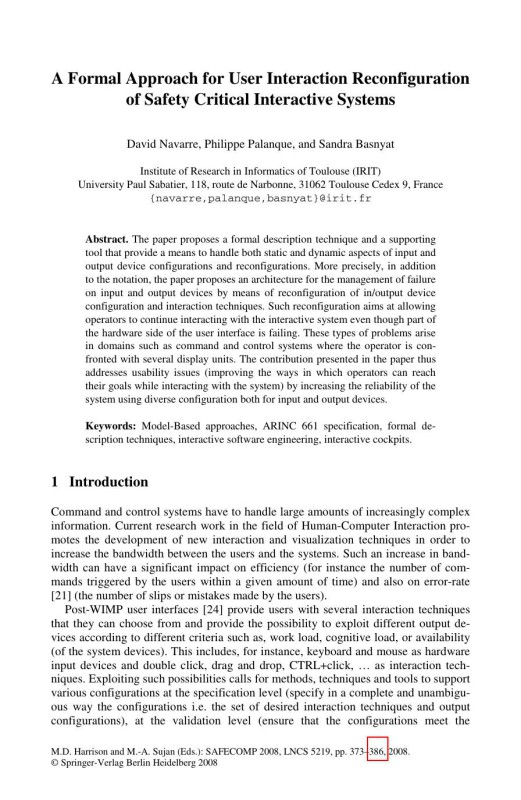
Product details:
ISBN 10: 3540876977
ISBN 13: 978-3540876977
Author: David Navarre, Philippe Palanque, Sandra Basnyat
The paper proposes a formal description technique and a supporting tool that provide a means to handle both static and dynamic aspects of input and output device configurations and reconfigurations. More precisely, in addition to the notation, the paper proposes an architecture for the management of failure on input and output devices by means of reconfiguration of in/output device configuration and interaction techniques. Such reconfiguration aims at allowing operators to continue interacting with the interactive system even though part of the hardware side of the user interface is failing. These types of problems arise in domains such as command and control systems where the operator is confronted with several display units. The contribution presented in the paper thus addresses usability issues (improving the ways in which operators can reach their goals while interacting with the system) by increasing the reliability of the system using diverse configuration both for input and output devices.
A Formal Approach for User Interaction Reconfiguration of Safety Critical Interactive Systems 1st Table of contents:
Chapter 1: Introduction
1.1 Overview of Safety-Critical Interactive Systems
1.2 Importance of User Interaction in Safety-Critical Systems
1.3 Challenges in User Interaction Reconfiguration
1.4 Motivation for a Formal Approach
1.5 Objectives and Contributions of the Paper
1.6 Structure of the Paper
Chapter 2: Background and Related Work
2.1 Safety-Critical Systems: Definitions and Examples
2.2 User Interaction in Safety-Critical Systems
2.3 Current Approaches to User Interface Reconfiguration
2.4 Formal Methods in System Design and Verification
2.5 Related Work on Safety, Usability, and Reconfiguration
2.6 Challenges and Limitations of Existing Approaches
Chapter 3: Formal Models for User Interaction
3.1 Overview of Formal Methods
3.2 Modeling User Interactions Using Formal Specifications
3.3 Defining User Interface States and Transitions
3.4 Formal Semantics for Safety-Critical Systems’ Interaction
3.5 Interfacing Formal Models with Interactive Systems
Chapter 4: User Interaction Reconfiguration in Safety-Critical Systems
4.1 Definition of User Interaction Reconfiguration
4.2 Scenarios for Interaction Reconfiguration in Safety-Critical Systems
4.3 Designing Reconfigurable User Interfaces
4.4 Safety and Usability Considerations in Reconfiguration
4.5 Reconfiguration Triggers and Conditions in Critical Environments
Chapter 5: Formal Approach for Interaction Reconfiguration
5.1 Formal Specification of Interaction Reconfiguration
5.2 Modeling Reconfiguration Rules and Constraints
5.3 Verification and Validation of Interaction Reconfiguration
5.4 Ensuring Safety and Consistency in Reconfigured Systems
5.5 Case Study: Formal Approach to a Specific Safety-Critical System
Chapter 6: Tools and Techniques for Formal Verification
6.1 Formal Verification Techniques for Safety-Critical Systems
6.2 Automated Tools for Interaction Reconfiguration
6.3 Model Checkers and Theorem Provers for User Interface Reconfiguration
6.4 Tool Integration and Workflow for Reconfiguration Verification
6.5 Evaluation of Tool Performance in Safety-Critical Contexts
Chapter 7: Case Studies and Applications
7.1 Interaction Reconfiguration in Aviation Systems
7.2 Medical Systems: Ensuring Safety and Usability
7.3 Automotive Safety-Critical Systems and Interaction Management
7.4 Application of Formal Reconfiguration to Real-Time Systems
7.5 Lessons Learned from Case Studies
Chapter 8: Challenges and Open Problems
8.1 Complexity in Modeling User Interactions
8.2 Scalability of Formal Verification for Large Systems
8.3 Balancing Safety and User Experience in Reconfiguration
8.4 Real-Time Constraints and Dynamic Reconfiguration
8.5 Unsolved Problems and Future Directions in Interaction Reconfiguration
Chapter 9: Conclusion
9.1 Summary of Contributions and Findings
9.2 Impact of the Formal Approach on Safety-Critical Systems Design
9.3 Future Directions in User Interaction Reconfiguration
9.4 Concluding Remarks on Formal Methods in Critical System Design
People also search for A Formal Approach for User Interaction Reconfiguration of Safety Critical Interactive Systems 1st:
user-based approach example
formal interaction meaning
garmin approach g10 user manual
interaction approach sociology
informal and formal socialization

